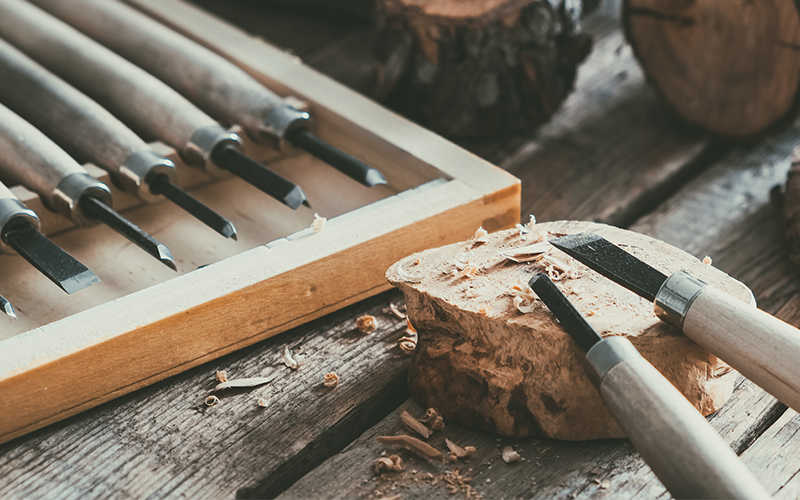START YOUR PROJECT

5 Uncommon Woodworking Techniques Every Woodworker Should Know
Woodworking is an ancient craft that has stood the test of time. With countless techniques and methods having been developed over the centuries, it’s easy for even the most experienced woodworkers to learn something new. In this blog, we’ll explore five lesser-known woodworking techniques that can greatly enhance your skill set and give your projects a unique touch. Let’s dive in!
Kerf Bending
Kerf bending is a technique that allows you to bend a flat piece of wood without breaking it. This is achieved by cutting a series of shallow notches, or kerfs, into the wood at regular intervals. The space between the kerfs determines the degree of bend, with closer spacing allowing for tighter curves. After cutting the kerfs, simply apply glue into the cuts and clamp the piece around a form to achieve the desired shape. This technique can be used to create elegant curves in your projects without the need for steam bending or laminating multiple layers.
Inlay and Marquetry
Inlay and marquetry are decorative techniques that involve embedding pieces of wood or other materials into the surface of a wooden object. Inlay typically involves cutting a recess into the wood, then inserting a contrasting wood or material flush with the surface. Marquetry, on the other hand, uses veneer to create intricate patterns or images by piecing together various wood species. Both techniques require precision and patience but can yield stunning results, adding an artistic touch to your woodworking projects.
Japanese Joinery
Japanese joinery is an age-old woodworking tradition that values precision and craftsmanship. This technique utilizes intricate joints, such as dovetails and mortise-and-tenon joints, without the use of nails or screws. These joints are designed to interlock, creating strong and durable connections while showcasing the beauty of the wood. Although mastering Japanese joinery can be challenging, it offers an excellent opportunity to elevate your woodworking skills and create projects that are both functional and visually appealing.
Shou Sugi Ban
Shou Sugi Ban, also known as Yakisugi, is an ancient Japanese technique used to preserve and finish wood by charring its surface. By applying fire to the wood, a layer of carbon is formed, which protects it from insects, rot, and UV damage. After charring, the wood can be brushed to remove loose soot and then sealed with oil. Shou Sugi Ban not only extends the life of the wood but also creates a unique aesthetic, making it an excellent choice for exterior or interior projects.
Shop-made Wood Veneer
While commercially available veneers are convenient, creating your own veneer allows for greater control over thickness, grain pattern, and species selection. With a bandsaw or a veneer saw, you can slice thin sheets of wood from a larger piece, which can then be applied to a substrate using glue or other adhesives. Creating your own veneer enables you to create custom designs, utilize unique wood species, and minimize waste by using offcuts or smaller pieces.
Woodworking is a craft that offers endless opportunities for learning and growth. By incorporating these uncommon techniques into your projects, you can expand your skill set, add unique touches to your work, and stand out from the crowd. So why not give these techniques a try? You might just discover a new favorite method that will take your woodworking to the next level!
